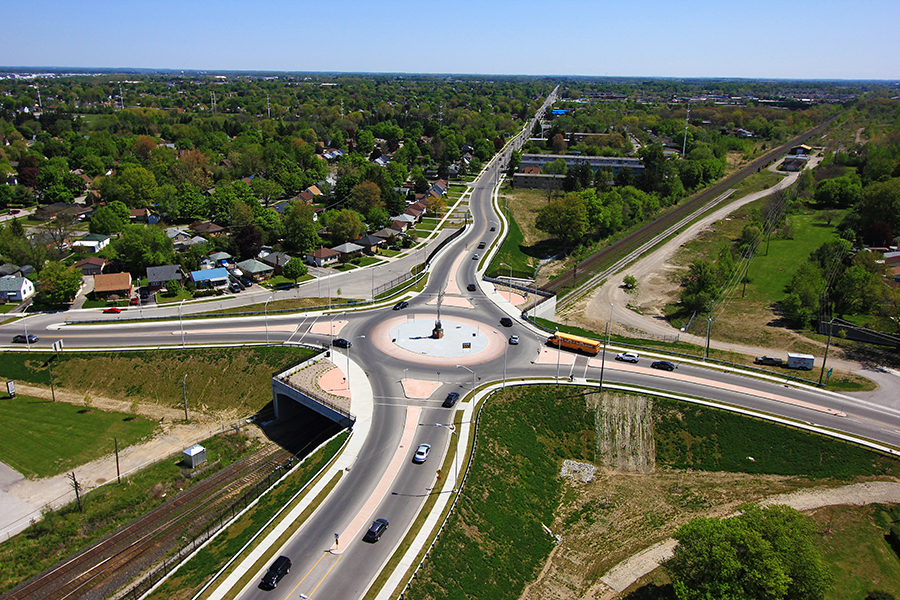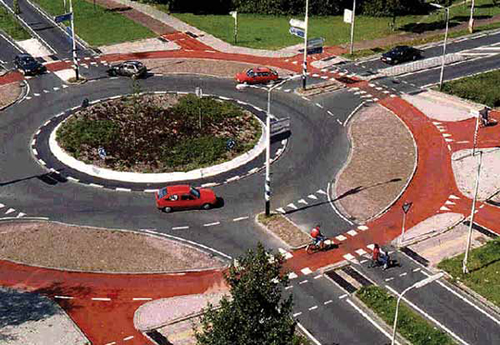As a driver, cyclist, and pedestrian, I love roundabouts. Mainly because you only have to stop if someone else is in the way, and they're based on yielding behavior, not a green light/right-of-way one. They also make things clear and predictable for those who know how to use them, and for those who don't, they become extra cautious.
However I do have issues with how we implement roundabouts in North America vs Europe. You'll notice the geometry is very different in the Dutch roundabouts vs the Ontario ones. Whereas the Dutch have straight approaches, and a near-perfect circular rotary, bike path, and sidewalk, the Ontario ones really flare out the vehicular approaches. The Ontario approach means cars can go a lot faster on the approach and exit, weakening the forced yield behavior. It also really skews and lengthens the pedestrian approaches and sight-lines. The Dutch also generally just use single-lane roundabouts in urban areas, and have moved beyond multi-lane roundabouts to turbo-roundabouts, with pedestrian-yield conditions in non-urban areas.
One of the better examples in Ontario, which is actually an older one, is the roundabout in Mississauga, at Duke of York and Square One Drive (
https://goo.gl/maps/Eoqnqy19oAJMns3U9). I love the near-perpendicular approaches, open sightlines, straight crosswalks, plus the artwork in the middle which is suggestive of the driving direction.
I definitely hope we see more roundabouts in Ontario, but I really wish we would design them closer to European (and especially Dutch) standards.













:format(webp)/https://www.thestar.com/content/dam/thestar/autos/2017/10/21/roundabouts-bring-a-new-challenge-to-drivers/_18jun12_roundaboutdrafts_037.jpg)



